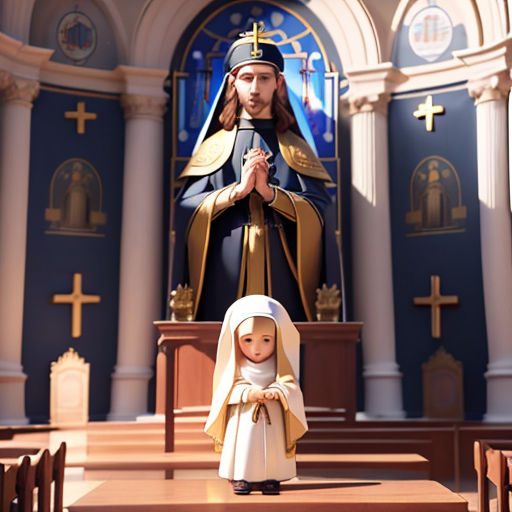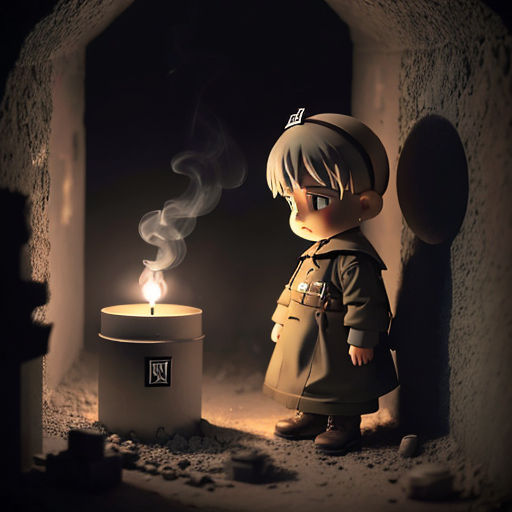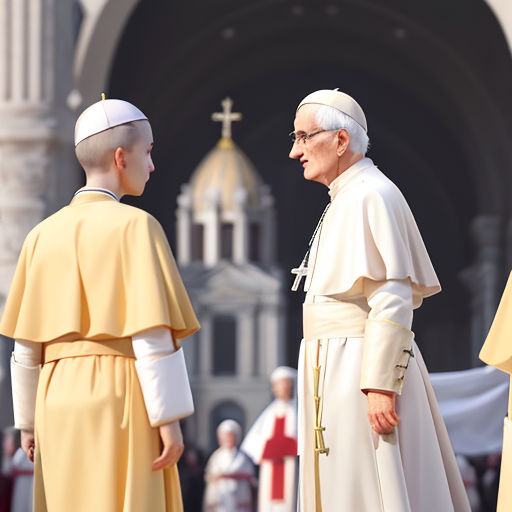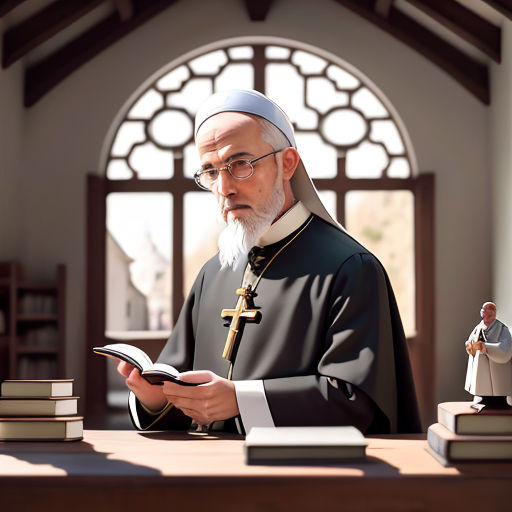
Maximilian Kolbe: A Beacon of Hope
By Storybird

30 Jun, 2023

St. Maximilian Kolbe was a Polish Catholic priest who, in the face of inhumane actions during World War II, held fast to his faith and sacrificed his life for another. He is known today as a martyr and a saint.

Kolbe was born on January 8, 1894, in Zdunska Wola, Poland, which was then a part of Russia. His parents were poor weavers who instilled in their five children the importance of faith and kindness.

From an early age, Kolbe felt a strong call to religious life. When he was 12, he had a vision of the Virgin Mary, who offered him two crowns: one white, symbolizing purity, and one red, symbolizing martyrdom. He chose both.

This vision deeply impacted Kolbe and solidified his desire to devote his life to God. At the age of 16, he joined the Conventual Franciscan Order, adopting the name Maximilian.

In 1910, Kolbe was sent to Rome to study. There, he was distressed by the anti-Catholic movements. Deeply influenced, he founded the Militia Immaculata, a religious organization which aimed to convert sinners and enemies of the Church.

After completing his studies in 1919, Kolbe returned to newly independent Poland. He was ordained and began teaching in the seminary in Krakow. He was keen to spread the knowledge of the Virgin Mary and the teachings of Christianity.

In 1927, he founded a new Franciscan monastery, Niepokalanów, which became a major religious publishing center. The monastery printed various periodicals and newspapers, all aimed at spreading the word of God.

Kolbe’s commitment to his faith took him beyond Poland. In 1930, he went to Japan, where he built another monastery, Nagasaki’s Our Lady of the Immaculate Conception. He also started a Japanese magazine to evangelize.

However, his overseas mission was cut short due to ill health. He returned to Poland in 1936 and continued his evangelization efforts. Yet, the tides of history were turning ominously.

When Germany invaded Poland in 1939, the monastery at Niepokalanów became a sanctuary for refugees, including 2,000 Jews. Despite the risk, Kolbe provided shelter and care, demonstrating his unwavering faith and love for humanity.

The Nazis arrested Kolbe in 1941 and sent him to Auschwitz, the notorious concentration camp. Despite the horrific conditions, he continued to perform his priestly duties, offering comfort and sacraments to fellow prisoners.

In July 1941, after a prisoner escaped, the camp authorities selected 10 men to die of starvation as a deterrent. One of the chosen men, Franciszek Gajowniczek, cried out in despair for his wife and children.

Moved by the man’s anguish, Kolbe offered to take his place. His request was granted, and thus he was thrown into the dreaded starvation bunker. He led the other doomed men in prayer and song, bringing hope amidst despair.

Kolbe survived two weeks in the bunker, longer than anyone else. Frustrated by his resilience, the Nazis ended his life by lethal injection on August 14, 1941. His remains were cremated on the Feast of the Assumption, a significant day for Mary's devotees.

After the war, Gajowniczek dedicated his life to honoring the man who saved him. He became an important voice in the process that led to Kolbe’s recognition as a martyr and a saint.

In 1971, Pope Paul VI declared Kolbe a martyr of charity, recognizing his sacrifice for Gajowniczek. On October 10, 1982, Pope John Paul II officially canonized him. Gajowniczek attended the ceremony, marking the occasion with tears of gratitude.

The story of St. Maximilian Kolbe is a heart-rending testament to human kindness in the face of ultimate evil. His life serves as a beacon of hope, reminding us that even in the darkest hours, love and faith can thrive.

Today, St. Maximilian Kolbe is revered as a patron saint of journalists, families, prisoners, the pro-life movement, and the chemically addicted. His devotion to his faith is an inspiration for many, urging them to embrace love and reject hate.

Kolbe’s monasteries in Poland and Japan still operate, continuing his mission of spreading the faith. His publications, including the one in Japanese, are a testament to his determination to propagate his beliefs, regardless of the circumstances.

Remembered for his selfless sacrifice and steadfast faith, St. Maximilian Kolbe continues to inspire countless individuals around the world. His life is a glowing testament to the power of faith and the enduring strength of the human spirit.

His story urges us to seek the white and red crowns in our lives. Kolbe chose both purity and sacrifice, showing us that the two are intertwined. His life teaches us that showing love towards others, even in dire times, is a noble form of living.

In the end, St. Maximilian Kolbe’s life is a poignant reminder of sacrifice, compassion, and unwavering faith. His story continues to empower individuals to choose love over hate, faith over doubt, and selflessness over self-preservation.

Each time we act with kindness, stand up for what is right, or offer help to those in need, we honor the spirit of St. Maximilian Kolbe. His legacy continues to light our path, guiding us towards the true essence of humanity – love and compassion for all.

As we remember St. Maximilian Kolbe, let us strive to embody his virtues in our daily lives. Let his story inspire us to make sacrifices for others and stand firm in our beliefs, regardless of the challenges we face.

St. Maximilian Kolbe's life story is not merely a journey from birth to death but a testament to the power of unwavering faith, sacrifice, and love. It is an inspiration we can draw upon in our lives, pushing us to embody compassion, irrespective of our circumstances.